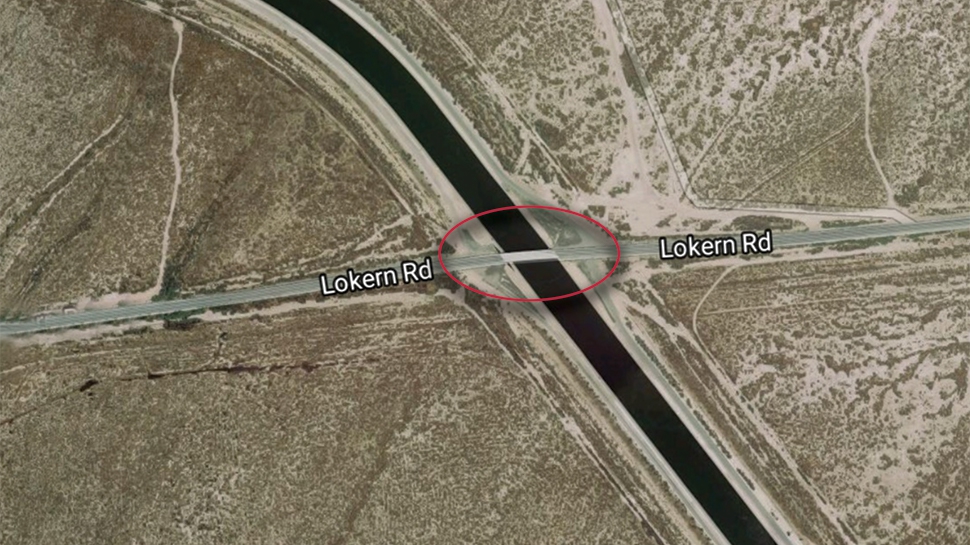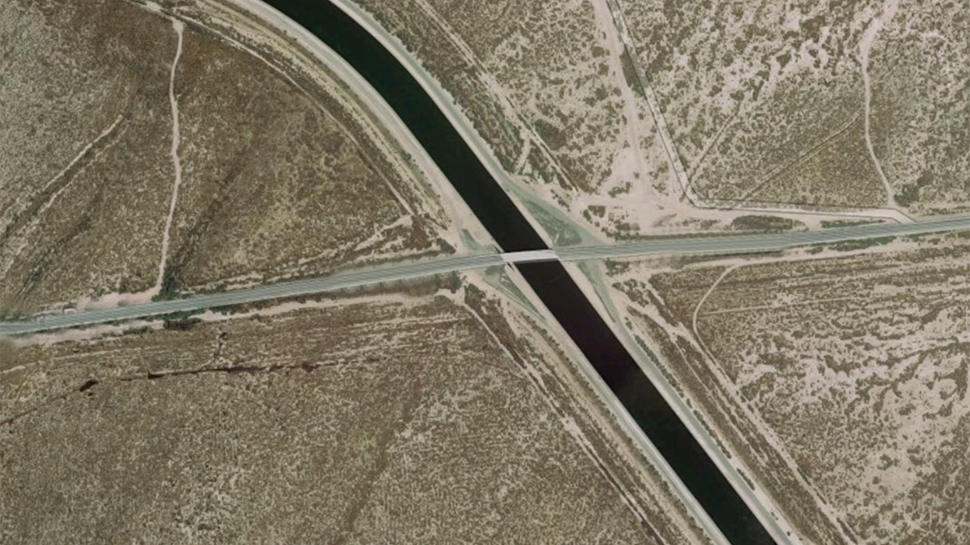
Komponent shrinkage-compensating concrete is protecting rebar by minimizing drying shrinkage cracking.
Lokern Road is a county road that serves as a “shortcut” between State Highways 33 and 58 in Kern County, Calif. The bridge, which crosses the California Aqueduct, is owned by the California Department of Water Resources (DWR). It had to be closed to through traffic in 2001 when a large hole of approximately 4 ft. x 5 ft. (1.2m x 1.5m) ) was found in the deck. It is believed that the hole was caused by overloaded trucks carrying low-level hazardous waste to a landfill crossing the bridge at high speeds.
Inspection of the deck curing at a pre-bid meeting at the jobsite revealed a myriad of drying shrinkage cracks which appeared to follow the rebar in the deck.
In order to repair and strengthen the deck, DWR designed a 3.5-in.-thick (89mm) concrete overlay (4000 psi at 28 days) reinforced with No. 4 rebar at 8 in. (203.2mm) o.c. each way. To eliminate drying shrinkage cracking, the use of shrinkage-compensating concrete was specified.
The successful bidder, Whitaker Contractors Inc., asked CTS Cement to develop a concrete mix design, based on a three-point curve, as well as to perform QC/QA at the batch plant and jobsite during the pour.
Trial batches were performed at a materials testing laboratory, Twining Laboratories of Southern California, in order to develop the three-point curve, using Komponent® expansive cement additive in conjunction with the local portland cement and aggregates proposed for this project.
A mix was chosen based on a mix design that achieved 4000 psi at 14 days. (The project timeline did not allow for 28-day results to be obtained.) A restrained expansion of at least 0.05% at seven days was required when tested in accordance with ASTM C878.
Because the total yardage was estimated to be 64 cu. yds. (48.9 cu. m.), for this project Komponent was added manually from a tower platform at the batch plant. Bags were emptied directly into the mixer.
The mix design used 600 lb. (272 kg) of portland cement, 110 lb. (50 kg) of Komponent, sand, 3/8-in. and 3/4-in. (9.5mm and 19mm) rock, 42.5 gallons (160.9 L) of water (w/cm = 0.50) and a superplasticizer. A w/cm of 0.50 and the use of a superplasticizer ensured sufficient water was available for complete hydration of the Komponent cement additive and maximized workability of the concrete.
Before placement of the rebar, the contractor shot-blasted the existing deck, removing about 1/2 in. (12.7mm) of concrete to effectively achieve a 4-in.-thick (101.6mm) overlay.
Concrete was placed by boom pump, one at each end of the deck. Placement started at 8 am on Dec. 8, 2001. It was foggy with ambient temperatures in the low 40s and rising—perfect weather for placing concrete!
Five truckloads were placed at the east end of the bridge, and four truckloads plus a cleanup load at the west end of the bridge, for a total of about 74 cu. yds. (56.6 cu. m.). A DWR concrete technician performed a slump test on each truck. The first load had a 7.5-in. (190.5mm) slump; succeeding loads ranged from a 4.5-in. (114.3mm) to a 6-in. (152.4mm) slump. The concrete from each truck experienced some slump loss during unloading but did not produce problems pumping, placing, vibrating, bull-floating or finishing. The technician also made test cylinders that were transported to Sacramento for testing.
A vibrating screed was used to consolidate and screed the concrete, along with a stinger vibrator to ensure encapsulation of the rebar. The concrete was bull-floated and given a light broom finish. Job specifications required a 14-day moist cure covered with burlene. Curing was completed as specified. The contractor opted to leave the wet burlap in place for an additional two weeks due to scheduling of another project. (No additional water was added during this time.)
At the inspection eight weeks after installation, no cracks were found. During the inspection, a waste hauler crossed the bridge traveling at an estimated speed of 50 mph. The entire bridge shook and vibrated without a single crack being induced. At another inspection 20 months after installation and service, the deck was again found to be crack-free.
For information on how Komponent can be used to provide a high-performance shrinkage-compensating concreting or grouting solution on your next project, contact a member of the CTS Cement Engineering Team at (800) 929-3030 or info@CTScement.com.
